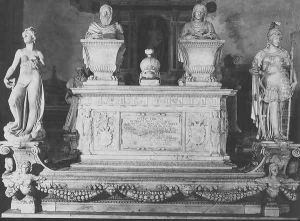Giovanni Marigliano Paintings
Giovanni Marigliano, also known as Giovanni Merliano da Nola, was an eminent Italian sculptor and architect of the Renaissance period, born in 1463 in Nola, a town situated in the Campania region of Italy. Though not as widely recognized as some of his contemporaries, Marigliano made significant contributions to the art and architecture of his time, leaving a lasting legacy through his work, which is characterized by its meticulous detail and the expressive realism of the figures he sculpted.
Initially trained in Naples, Marigliano's early career was influenced by the prevalent styles of the time, including the work of Tuscan artists who had brought the Renaissance to southern Italy. He was particularly noted for his skill in working with marble and wood, producing both religious and secular pieces that demonstrated not only his technical prowess but also his deep understanding of human emotion and anatomy. His works often featured elaborate narratives, capturing the complexities of religious stories and mythologies with a vividness that was ahead of his time.
Throughout his career, Marigliano received commissions from many of the most important figures and institutions of his day, including churches, monasteries, and members of the nobility, which allowed him to work across various regions of Italy. One of his most famous works is the marble altarpiece in the Cathedral of Naples, a masterpiece of Renaissance sculpture that showcases his ability to blend architectural elements with sculptural ones to create a harmonious and impactful religious space.
Marigliano's approach to sculpture was innovative for his incorporation of naturalistic details and his ability to convey deep expressions of spirituality and emotion. His contributions to Renaissance art, particularly in the realm of sculpture, were significant, helping to push the boundaries of the medium and laying the groundwork for future generations of artists. Giovanni Marigliano passed away in 1544, but his works continue to be studied and admired for their beauty and technical excellence, serving as enduring examples of the Renaissance spirit.
